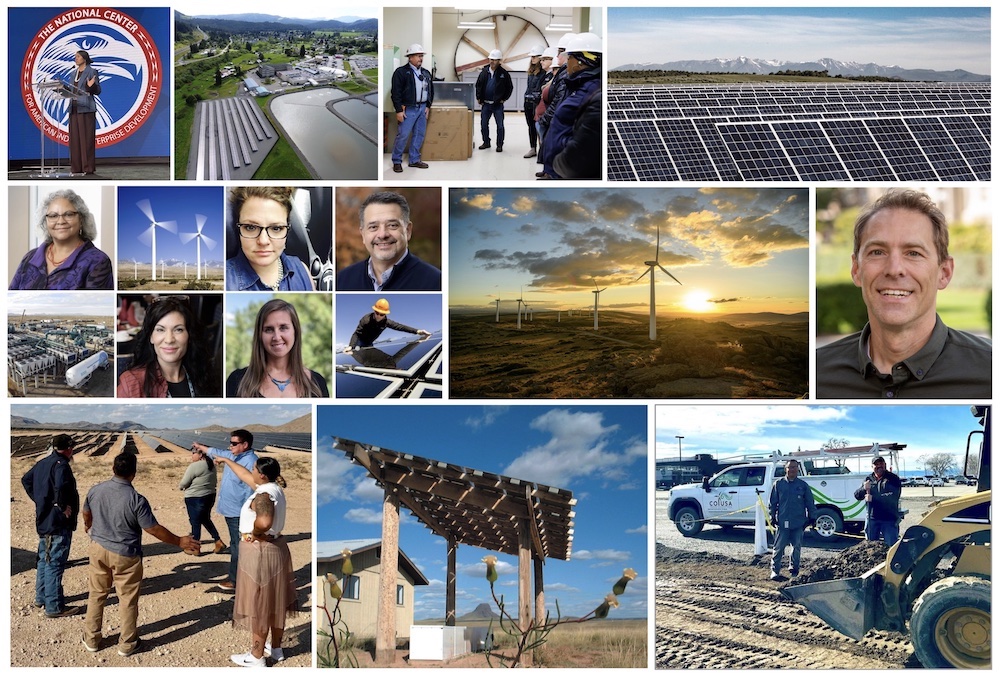
- Details
- By Chez Oxendine
- Energy | Environment
Energy development emerged as one of Indian Country’s dominant economic stories in 2024, as tribes navigated historic federal funding, new tax rules, emerging revenue models, and rising opportunities for energy sovereignty.
Tribal Business News was there to find the stories of lowered barriers, transformational opportunities, and standing at the forefront of the clean energy transition. Here are the 10 most-read energy stories from 2024.
Tribal energy program awakens with $72.8M loan deal
The Department of Energy’s languishing tribal loan program awakened with a $72.8M guarantee for Viejas Band's solar microgrid, marking the first use of a 30-year-old program. The precedent-setting deal could unlock billions in clean energy financing through the program's expanded $20B authority.
Oregon tribe’s $857M power line upgrade could unlock renewable energy future
Warm Springs tribe invests $250M in an $857M transmission upgrade to solve a critical bottleneck hampering renewable development. The project will nearly double capacity, creating a model for tribes facing similar constraints.
POWERING THE FUTURE: Meet 5 leaders ready to transform clean energy finance in Indian Country
Meet five key leaders who will play key roles in the deployment of $2 billion to Indian Country through the Greenhouse Gas Reduction Fund, steering new financing hubs and programs designed to accelerate tribal clean energy development. Their expertise spans Native CDFIs, legal frameworks, and project implementation.
California tribes unite for $177M microgrid project to combat power outages and boost energy sovereignty
Four northern California tribes join forces on a pioneering $177M microgrid network to combat chronic outages. The innovative project will create independent but interconnected grids serving remote communities while advancing energy sovereignty.
$2 billion secured for tribal clean energy as EPA locks in historic funding
The Environmental Protection Agency secured $2 billion for tribal clean energy through three major programs under the Greenhouse Gas Reduction Fund, with funding officially obligated before potential administration change. The program supports a range of clean energy investments — from large-scale tribal projects to residential solar installations.
Alliance for Tribal Clean Energy launches $100M fund at Clinton Global Initiative
The nonprofit Alliance for Tribal Clean Energy launched a $100 million fund to help tribes and other entities tackle predevelopment costs. The initiative addresses a critical financing gap, with DOE and another nonprofit following suit with similar funds.
Native leaders brace for shift in energy, broadband funding after Trump victory
Trump’s victory prompts tribal leaders to explore alternative funding sources for energy projects. Organizations begin looking to philanthropy, private investors, and intertribal partnerships to maintain momentum amid policy uncertainty.
‘We’re building the rocket ship while flying it.’ | Tribal clean energy and the struggle with tax credits
Complex tax rules create barriers for tribes seeking renewable energy credits worth 30% to 70% of project costs. The intersection of tribal sovereignty and tax law poses unique challenges as tribes and federal agencies navigate new legal territory.
Q+A: Professor Dominic Parker on why tribal lands' strong renewable energy potential remains untapped
A new research study by the University of Wisconsin-Madison economist shows reservations are half as likely to host renewable projects as neighboring lands despite major economic potential. The study finds poorest reservations could generate $50,000 per tribal member, but face regulatory hurdles requiring 49 steps versus 4 on private land.
Tribal energy enterprise partners with Native investment firm to develop utility-scale projects
Tribally owned Colusa Indian Energy partners with True Family Enterprises to scale up tribal energy development. The venture aims to build utility-scale projects serving data centers and distribution facilities, potentially generating revenues exceeding gaming income.
